Understanding Autistic Burnout: A Comprehensive Guide to Causes, Symptoms, and Intervention Strategies
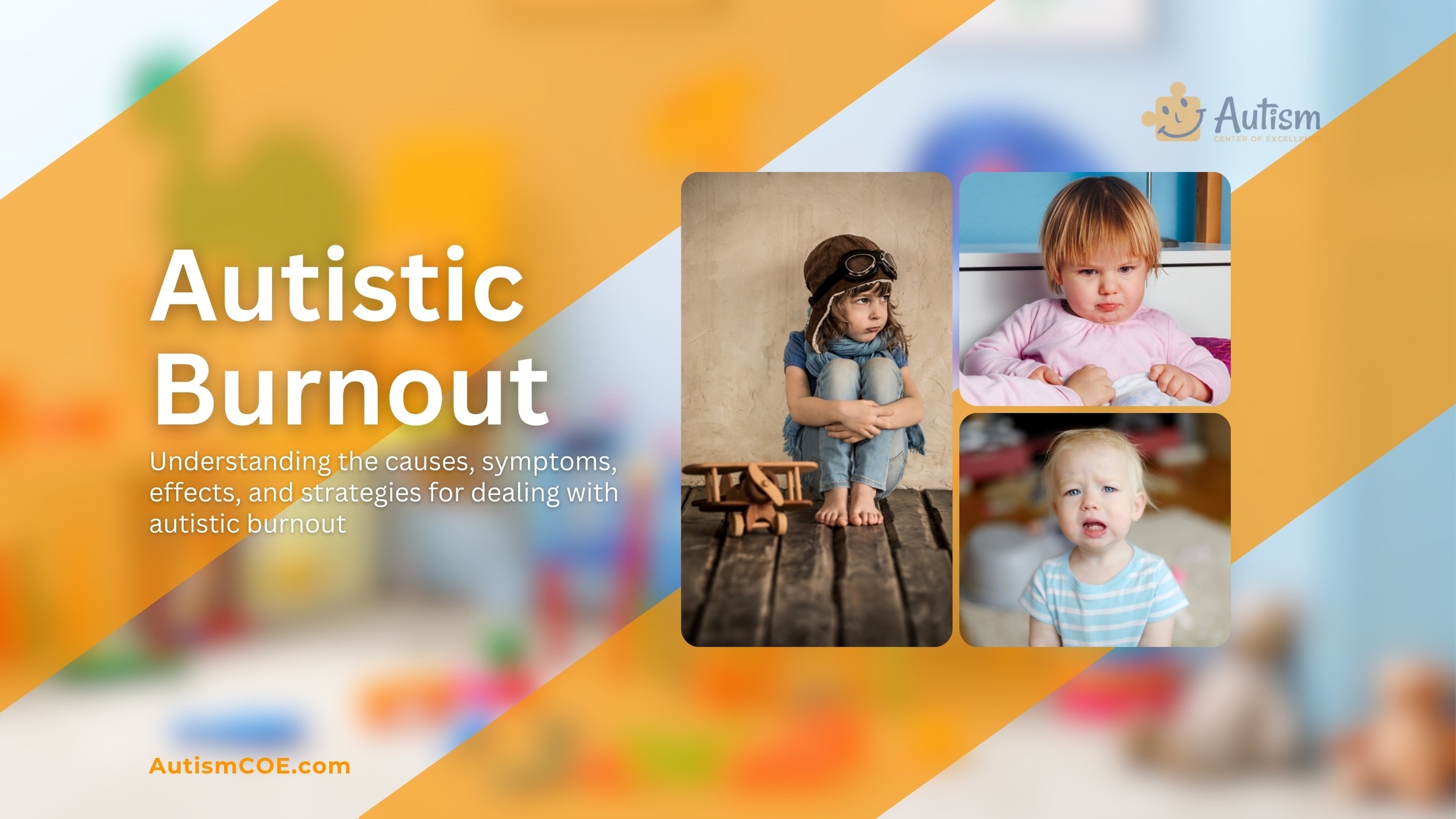
Autistic burnout is a term often used within the autistic community to describe a state of exhaustion, loss of skills, and reduced tolerance to stimulus. It is a condition that is not widely recognized in clinical or academic research but is frequently reported by individuals with Autism Spectrum Disorder (ASD). This article aims to shed light on this phenomenon, exploring its causes, symptoms, impacts, and potential coping strategies.
Understanding autistic burnout is critical, not just for those living with autism, but also for their families, educators, and healthcare providers, as it can significantly affect an individual’s ability to function and thrive in daily life. The insights shared here are based on personal accounts, expert opinions, and existing research, providing a comprehensive overview of this lesser-known aspect of autism.
At Autism Center of Excellence, we are dedicated to providing exceptional support to children with autism, from the tender age of 2 all the way until they reach 14. Our mission is to enhance the lives of these children through our range of specialized therapeutic services, tailored to meet their unique needs in both home and center-based settings.
Understanding Autism
Autism Spectrum Disorder (ASD) is a complex neurodevelopmental disorder that impacts social interaction, communication, interests, and behavior. It is called a “spectrum” disorder because it manifests in many ways and can range from mild to severe. Individuals with ASD may experience challenges with social interactions, have difficulty with verbal and non-verbal communication, engage in repetitive behaviors, and show resistance to changes in routine.
Autism is not a single condition but rather a variety of conditions characterized by challenges with social skills, repetitive behaviors, speech, and nonverbal communication. According to the Centers for Disease Control, autism affects an estimated 1 in 54 children in the United States today.
It’s important to note that every autistic individual is unique, with their own strengths and weaknesses. Some individuals with ASD may have exceptional abilities in visual skills, music, and academic skills. Others may live independently, while some might require significant support in their daily lives.
Understanding autism is a critical step in understanding autistic burnout, as the traits that characterize ASD can contribute to the onset of burnout. However, it’s also essential to remember that being autistic is just one aspect of an individual’s identity and does not define their value or potential.
The Concept of Burnout
Burnout is a state of emotional, mental, and often physical exhaustion brought on by prolonged or repeated stress. Though it’s most often caused by problems at work, any area of life can contribute to burnout, including personal relationships, social activities, or health problems.
The concept of burnout was first introduced in the 1970s by psychologist Herbert Freudenberger, who defined it as “a state of fatigue or frustration brought about by devotion to a cause, way of life, or relationship that failed to produce the expected reward.”
Burnout is typically characterized by three dimensions:
🌟Exhaustion:
A feeling of being emotionally overextended, drained, and depleted of one’s emotional resources.
🌟 Cynicism:
A negative, callous, or excessively detached response to various aspects of one’s job or life responsibilities.
🌟 Inefficacy:
Feelings of incompetence or a lack of achievement and productivity at work or in one’s personal life.
These symptoms can lead to decreased productivity, low morale, and a withdrawal from social or occupational commitments. It’s important to note that burnout is not simply a result of long hours or a hefty workload. It can also occur when a person feels unappreciated, unsupported, or when their efforts are not recognized or rewarded.
Understanding these aspects of burnout provides a foundation for exploring autistic burnout, which shares similarities with this general concept but also has distinct characteristics specific to individuals with Autism Spectrum Disorder.
What is Autistic Burnout?
Autistic burnout is a syndrome conceptualized as resulting from chronic life stress and a mismatch of expectations and abilities without adequate supports. It is characterized by pervasive exhaustion, loss of skills, and reduced tolerance to stimulus.
While the concept of burnout has been extensively studied in relation to work and caregiving, there’s less research on autistic burnout. However, it’s a term often used within the autistic community to describe an intense physical, mental, or emotional exhaustion, sometimes accompanied by a loss of skills that the individual once had.
Autistic individuals often have to navigate environments designed for neurotypical individuals, which can be stressful and lead to burnout. This stress can be exacerbated by the effort to ‘mask’ or ‘camouflage’ their autism by learning to behave in ways that are more typically expected in social situations.
Symptoms of autistic burnout may include extreme fatigue, difficulty with self-care routines, a decrease in social tolerance, and an increase in autistic traits, such as stimming (self-stimulatory behavior, like hand flapping or rocking). There may also be an increase in meltdowns or shutdowns, periods of withdrawal or disconnection from the world.
Like general burnout, autistic burnout can have serious impacts on an individual’s life, including their health, relationships, and ability to work or study. Understanding and addressing autistic burnout is therefore a crucial aspect of supporting the wellbeing of autistic individuals.
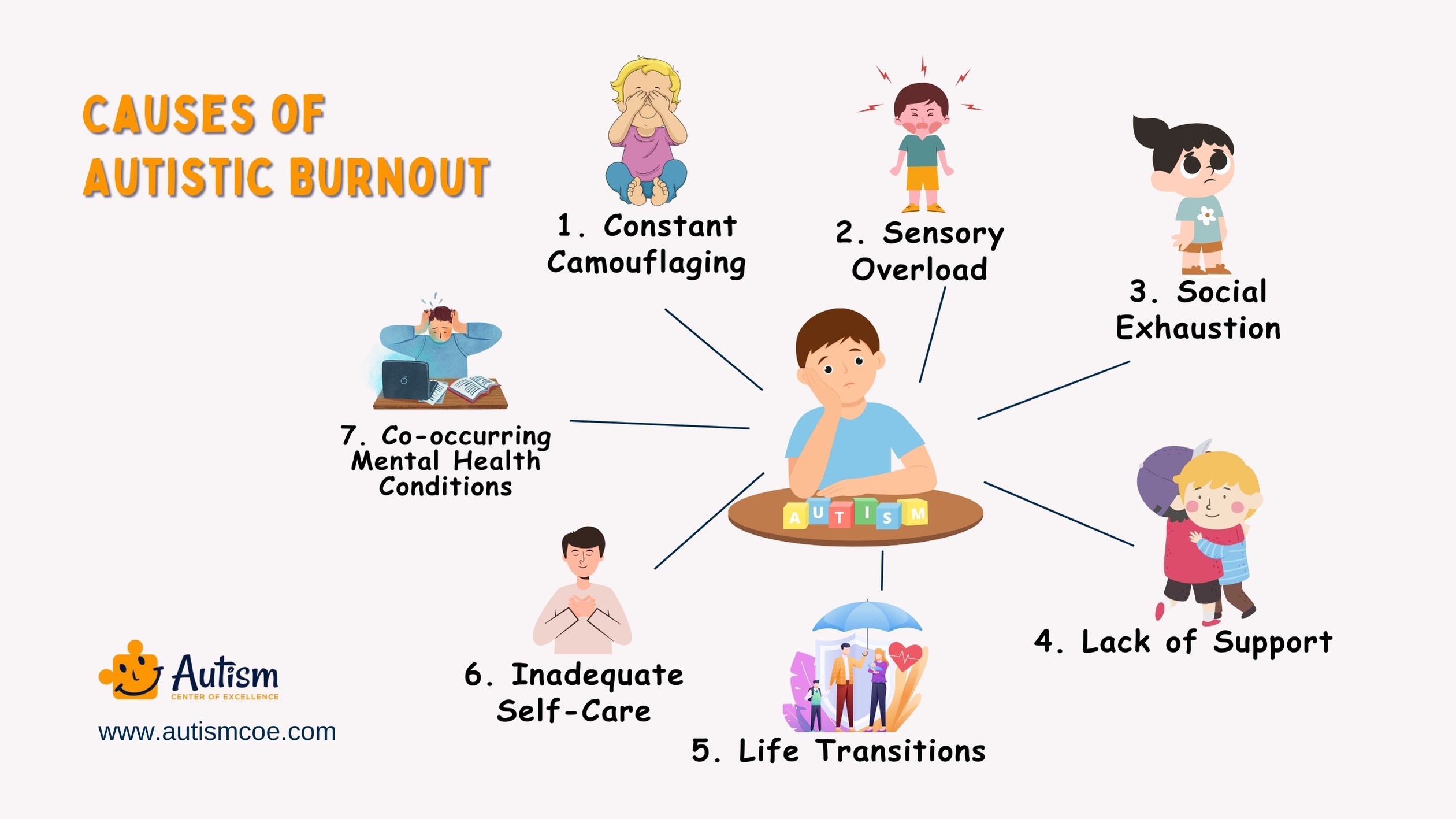
Causes of Autistic Burnout
The causes of autistic burnout can be diverse and often involve a combination of factors. Here are some common triggers:
1. Constant Camouflaging:
Many autistic individuals feel the need to ‘mask’ or ‘camouflage’ their autism in order to fit into neurotypical society. This constant effort to suppress natural behaviors and mimic neurotypical ones can be mentally and physically exhausting, leading to burnout.
2. Sensory Overload:
Autistic individuals often have heightened sensitivity to sensory inputs such as sound, light, touch, and movement. Continual exposure to overwhelming sensory environments can lead to chronic stress and eventually burnout.
3. Social Exhaustion:
Navigating social situations can be challenging for autistic individuals due to difficulties in understanding non-verbal cues, maintaining eye contact, and managing conversational turns. Constantly being in socially demanding environments can lead to exhaustion.
4. Lack of Support:
Insufficient understanding and support from family, friends, educators, and healthcare professionals can exacerbate feelings of isolation and stress, contributing to burnout.
5. Life Transitions:
Major changes such as starting a new job, moving to a new place, or going through puberty can be particularly stressful for autistic individuals and can trigger burnout.
6. Inadequate Self-Care:
Difficulty with executive functioning tasks, like planning and prioritizing, can make it hard for autistic individuals to maintain healthy self-care routines, leading to physical and mental exhaustion.
7. Co-occurring Mental Health Conditions:
Many autistic individuals also have co-occurring conditions such as anxiety, depression, or ADHD, which can increase stress levels and contribute to burnout.
Understanding these causes is an important step towards preventing and managing autistic burnout. It’s crucial to remember that each autistic individual is unique, so what leads to burnout in one person may not in another.
Join Our Weekly Newsletters!
Subscribe now to stay updated with our latest email updates.
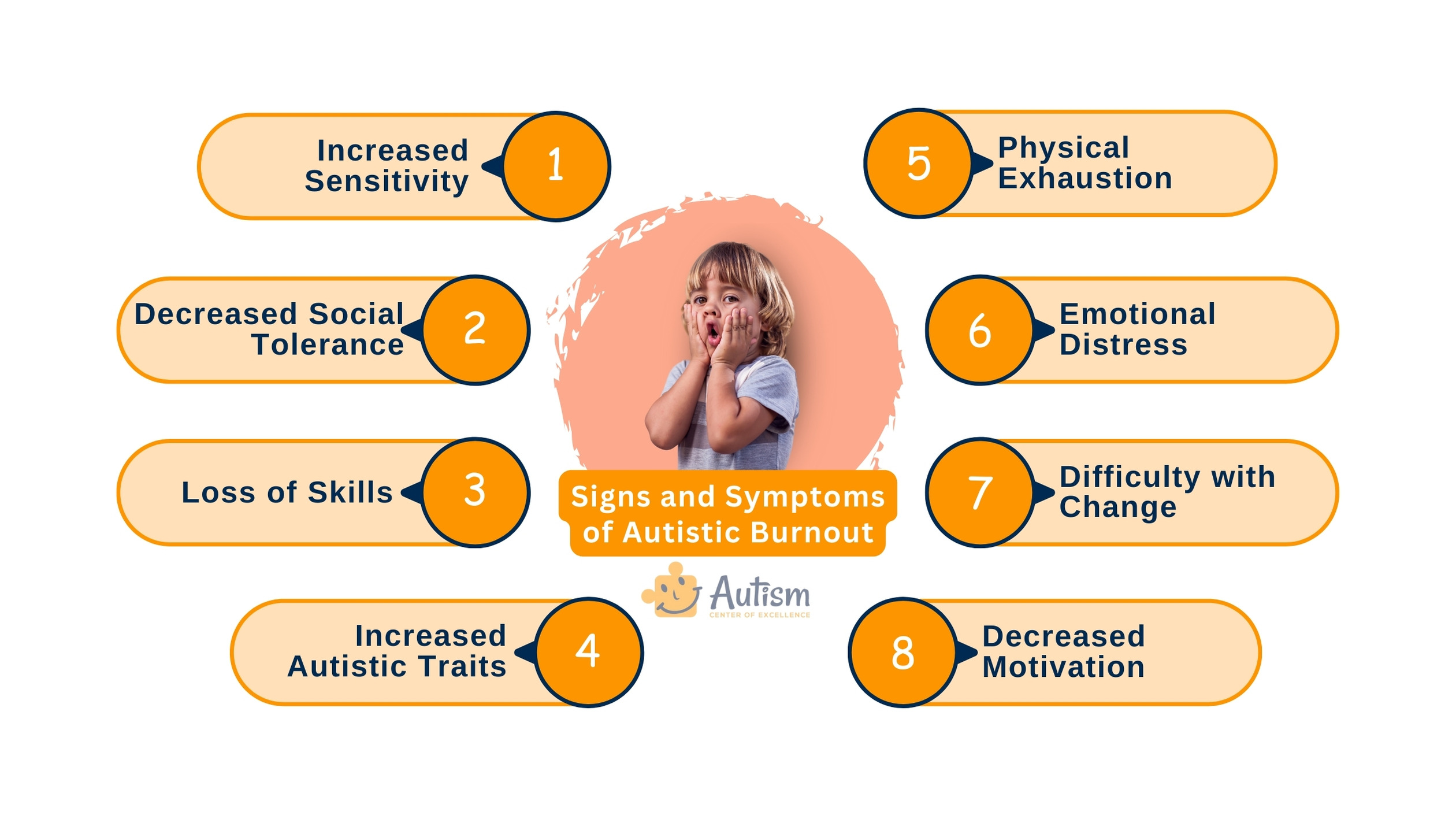
Signs and Symptoms of Autistic Burnout
The signs and symptoms of autistic burnout can vary from person to person, but they often involve a significant decrease in functioning, increased sensitivity to stimuli, and an overall sense of exhaustion. Some common signs and symptoms include:
☑️ Increased Sensitivity:
Autistic individuals experiencing burnout may find that their sensory sensitivities are heightened. This could mean they become more easily overwhelmed by lights, sounds, touch, or other sensory inputs.
☑️ Decreased Social Tolerance:
They may find social interaction more difficult than usual, leading to withdrawal from social situations or increased discomfort during social engagement.
☑️ Loss of Skills:
Autistic burnout can lead to a loss of skills that the person previously had. This could include difficulties with communication, executive function skills like planning and organization, or daily living skills like cooking and cleaning.
☑️ Increased Autistic Traits:
People experiencing autistic burnout may show an increase in behaviors typically associated with autism, such as stimming, echolalia (repeating words or phrases), or perseveration (getting stuck on a particular thought or topic).
☑️ Physical Exhaustion:
Chronic fatigue and lack of energy are common symptoms of autistic burnout.
☑️ Emotional Distress:
Feelings of anxiety, depression, irritability, or emotional numbness can also occur.
☑️ Difficulty with Change:
Individuals experiencing autistic burnout may have increased difficulty in coping with even minor changes in routine or environment.
☑️ Decreased Motivation:
A lack of interest in activities they used to enjoy, or a general lack of motivation, can be another sign of burnout.
Recognizing these signs and symptoms is crucial for early intervention and support. It’s important to note that these symptoms can mimic those of other conditions, such as depression or anxiety disorders, so professional evaluation may be necessary to confirm a diagnosis of autistic burnout.
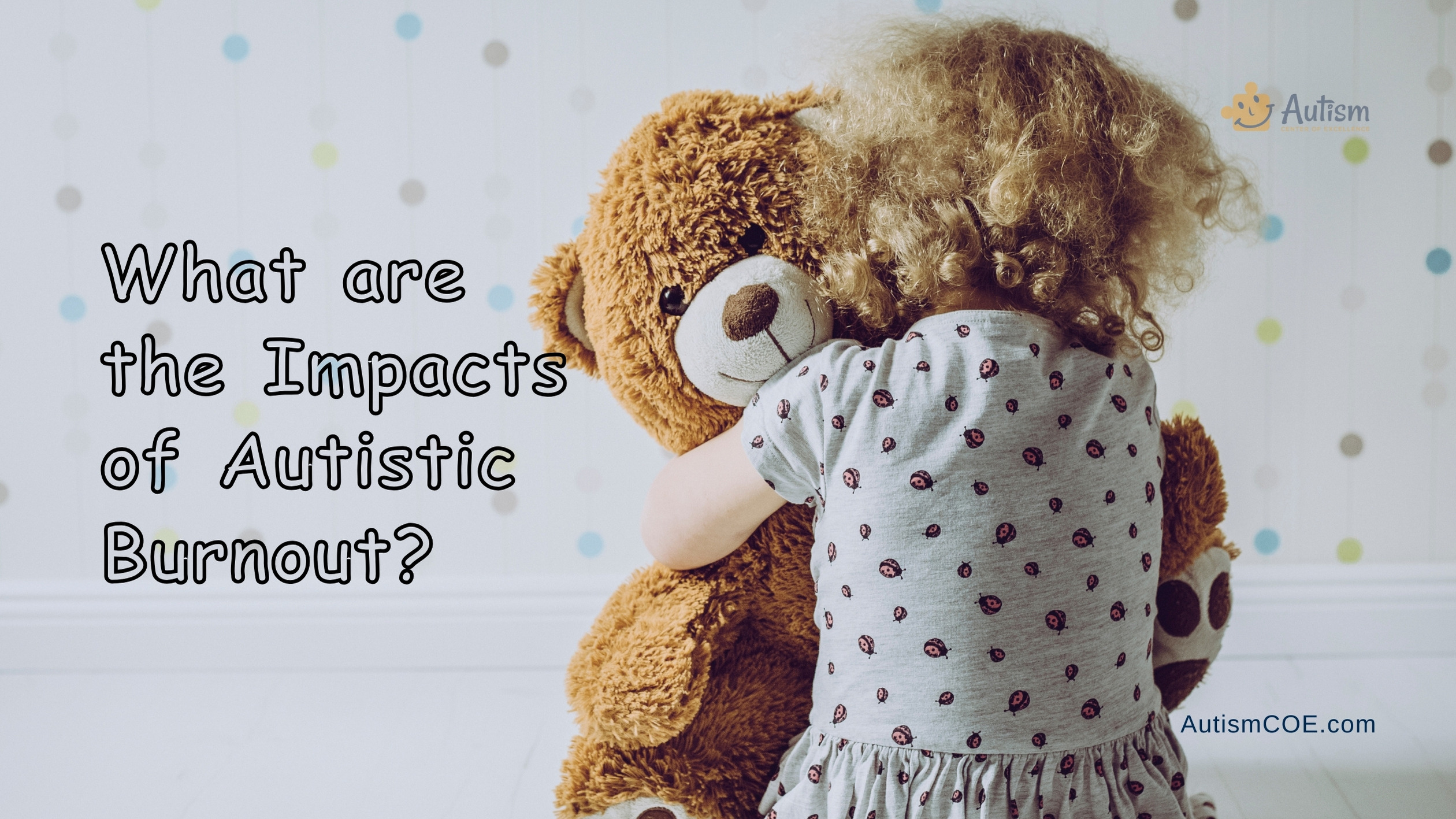
Impacts of Autistic Burnout
Autistic burnout can have significant impacts on an individual’s life, affecting various aspects including health, relationships, work, and overall quality of life. Here are some potential impacts:
1️⃣ Physical Health:
Chronic stress and exhaustion can contribute to a variety of physical health issues, including headaches, digestive problems, and decreased immune function.
2️⃣ Mental Health:
Autistic burnout can exacerbate existing mental health conditions such as anxiety and depression. It can also lead to feelings of hopelessness, worthlessness, and suicidal ideation in severe cases.
3️⃣ Social Relationships:
Decreased social tolerance and increased withdrawal can lead to strained relationships with family, friends, and colleagues.
4️⃣ Work or School Performance:
Burnout can lead to difficulties in concentrating, problem-solving, and completing tasks, which can negatively impact performance at work or school.
5️⃣ Daily Living Skills:
Individuals experiencing burnout may struggle with daily living skills they previously mastered, like cooking, cleaning, or personal hygiene.
6️⃣ Quality of Life:
Overall, autistic burnout can significantly decrease an individual’s quality of life, leading to feelings of dissatisfaction, unhappiness, and reduced self-esteem.
Due to these potential impacts, it’s crucial to take autistic burnout seriously and seek professional help when needed. With appropriate support and interventions, it’s possible to recover from burnout and regain lost skills and capacities.
8️⃣ Model Me Going Places
This app uses visual narratives to help children understand and navigate various social situations. It’s simple, straightforward, and can be a valuable tool for teaching social skills.
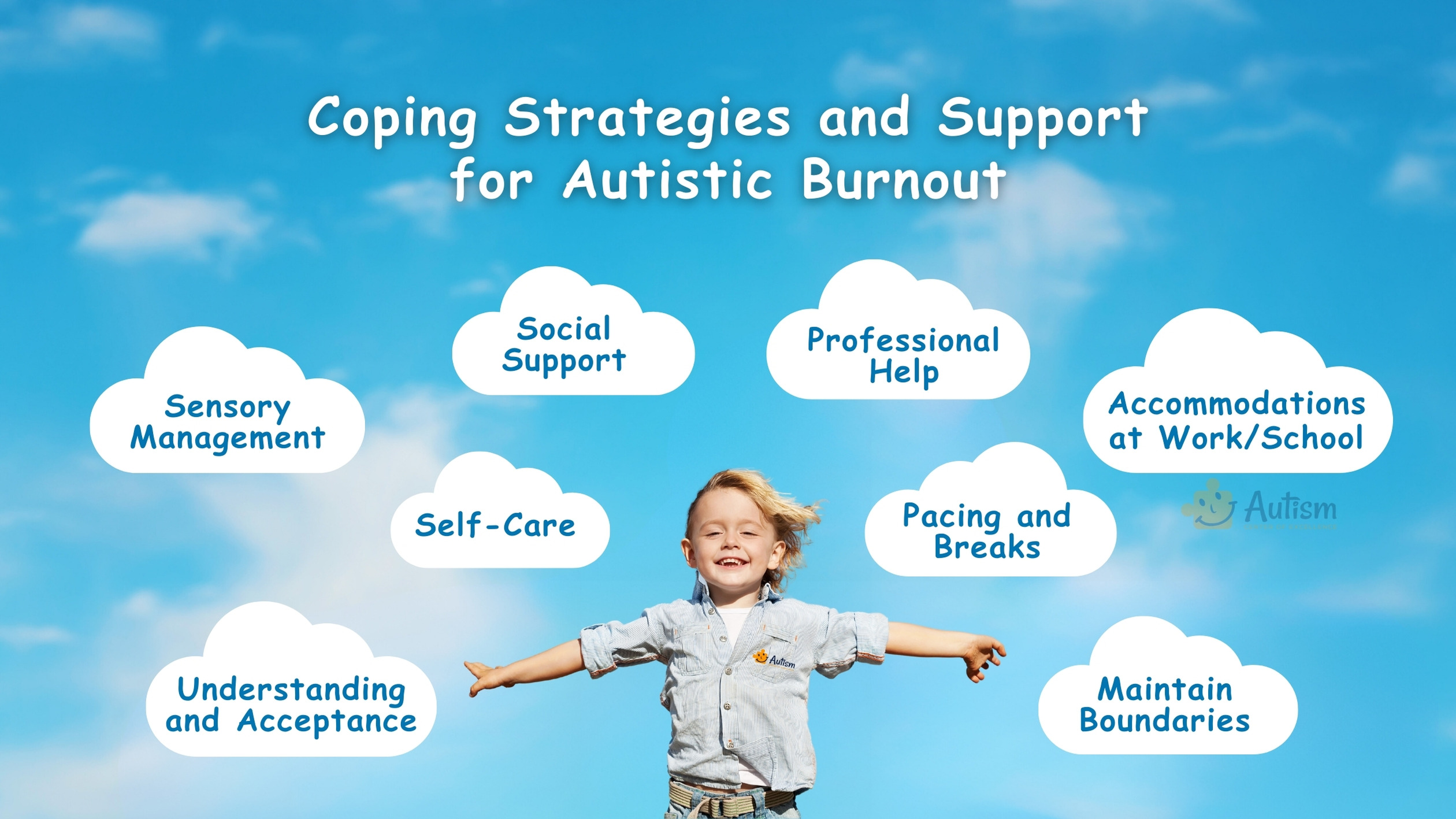
Coping Strategies and Support
Coping with autistic burnout involves strategies that help reduce stress, promote self-care, and provide support. Here are some strategies that may be helpful:
☑️ Understanding and Acceptance:
Recognizing and accepting autism as an integral part of one’s identity can help reduce the pressure to camouflage or mask autistic traits. Education about autism for the individual, their family, friends, and support network can foster this understanding and acceptance.
☑️ Self-Care:
Regular physical activity, a balanced diet, adequate sleep, and relaxation techniques such as meditation or deep breathing can help manage stress and prevent burnout.
☑️ Sensory Management:
Sensory Management: Using strategies to manage sensory overload, such as wearing noise-cancelling headphones, using fidget tools, or creating a quiet, calming space at home, can be beneficial.
☑️ Social Support:
Connecting with other autistic individuals, either in person or through online communities, can provide a sense of belonging and understanding. Family and friends can also provide emotional support.
☑️ Professional Help:
Therapists or counselors experienced in working with autistic individuals can provide strategies for managing stress, anxiety, and other mental health issues. Occupational therapists can also provide strategies for managing sensory sensitivities and improving daily living skills.
☑️ Accommodations at Work or School:
Requesting accommodations such as a quieter workspace, flexible hours, or additional time for tasks can help reduce stress and improve performance.
☑️Pacing and Breaks:
Taking regular breaks and pacing activities throughout the day can help prevent overexertion and manage energy levels.
☑️ Boundaries:
Learning to set and maintain boundaries can help reduce social exhaustion. This could involve saying no to social invitations when needed or limiting time spent on demanding activities.
Remember, what works best will depend on the individual’s unique needs and circumstances. It’s important to seek professional advice when needed and to approach the process of recovery from burnout with patience and self-compassion.
About AutismCOE (Autism Center of Excellance)
Autism Center of Excellence, located in North Carolina and Virginia, provides a wide range of services to children aged 2 to 14 years. Our services are available at home and in center-based environments, making it convenient for families.
In North Carolina, we serve Durham, Raleigh, Chapel Hill, Apex, Garner, Wake Forest, Cary, and Fayetteville. Meanwhile, in Virginia, we extend our services to Richmond, Midlothian, Chester, Henrico, Tuckahoe, Lynchburg, Petersburg, North Chesterfield, Chesterfield, Colonial Heights, Charlottesville, Chesapeake, Norfolk, Suffolk, and Virginia Beach.
AutismCOE services include:
ABA Therapy
ABA Therapy is designed to improve specific behaviors in children with autism.
ABA for Early Intervention
We focus on early detection and intervention to maximize the potential of children with autism.
ABA for School Readiness
Our School Readiness program prepares children for school by teaching them necessary skills.
Speech Therapy
Our Speech Therapists work with children to improve their communication skills.
Specialized Parent Training
We provide training to parents to help them support their child’s development.
Center-Based ABA Therapy
We offer ABA therapy services at our center.
In-Home ABA Therapy
For convenience, we also provide ABA therapy at home.
We are committed to helping children with autism live fulfilling lives.
Frequently Asked Questions & Answers
Can Autistic Burnout Be Prevented or Managed?
Prevention and management of autistic burnout often involve creating supportive environments that reduce demands on autistic individuals. This can include accommodations at work or school, regular breaks, routines that limit unexpected changes, and respect for sensory preferences. Additionally, self-care strategies like prioritizing sleep, engaging in enjoyable activities, and seeking support from therapists or peer groups can be beneficial.
What Should I Do if I Suspect Someone is Experiencing Autistic Burnout?
If you suspect someone is going through autistic burnout, it’s important to approach the situation with empathy and understanding. Offer support and ask how you can help alleviate their stressors. Encourage them to seek professional assistance from a psychologist or counselor familiar with ASD, and if needed, assist them in finding resources or advocacy groups that specialize in autism support. It’s crucial to provide a non-judgmental space for the individual to express their needs and feelings.
What Are the Symptoms of Autistic Burnout?
Symptoms of autistic burnout can include extreme tiredness, difficulty with executive functioning (like planning and organizing), a decrease in social skills, reduced tolerance for stimuli, a decline in previously acquired abilities, increased anxiety, depression, and a general sense of being unable to cope with day-to-day activities.
What Happens in Autistic Burnout?
Autistic burnout is a state of physical and mental exhaustion that people on the autism spectrum can experience. It often results from the cumulative effect of having to navigate a world that is not designed with their needs in mind. The constant effort required to manage social interactions, process sensory information, and maintain coping mechanisms can lead to a significant breakdown in their capacity to function as they normally would.
During autistic burnout, individuals might experience:
Increased Sensory Sensitivity: Everyday sensory inputs can become overwhelmingly intense, making environments that were once tolerable now unbearable.
Reduced Executive Functioning: Skills such as planning, organizing, focusing, and remembering details can decline, making it difficult to perform tasks that require these cognitive functions.
Loss of Social Skills: There may be a noticeable withdrawal from social situations and difficulty in performing social niceties or maintaining relationships.
Chronic Exhaustion: Despite adequate rest, individuals might feel persistently tired and lack the energy to engage in activities.
Diminished Coping Strategies: Usual methods for managing stress and anxiety may no longer be effective, leading to increased instances of meltdowns or shutdowns.
Loss of Skills: Individuals might experience a regression in skills they previously mastered, including language, self-care, or work-related abilities.
Mental Health Issues: There is often an increase in anxiety, depression, irritability, and other emotional difficulties.
Physical Symptoms: Stress-related physical symptoms such as headaches, gastrointestinal distress, and sleep disturbances can arise or worsen.
Understanding autistic burnout and its impact is crucial for providing the appropriate support to individuals who are experiencing it. Interventions might include reducing demands, creating low-stress environments, allowing for more downtime, and employing personalized coping strategies. Professional guidance from therapists who specialize in autism can provide valuable support for recovery and prevention of future burnout episodes.
Conclusion
Autistic burnout is a significant issue that can profoundly impact an individual’s life. It’s characterized by increased sensitivity, decreased social tolerance, loss of skills, heightened autistic traits, physical exhaustion, emotional distress, difficulty with change, and decreased motivation.
The consequences of this burnout can manifest in numerous ways, affecting physical and mental health, social relationships, work or school performance, daily living skills, and overall quality of life.
However, understanding and acceptance of one’s autism, self-care practices, sensory management, social support, professional help, accommodations at work or school, pacing and taking breaks, and setting boundaries can all play a role in coping with and recovering from autistic burnout.
Please Note: The content of this blog is for informational purposes only and should not be considered a substitute for professional medical advice, diagnosis, or treatment. Consult a qualified healthcare professional for personalized guidance tailored to your specific situation.

Bhavika Bhasin
Bhavika Bhasin is the Research and Marketing officer at AutismCOE. She works with children and adults with ASD. Her clinical research includes evaluating various available autism screening and diagnosis methods and their efficacy. She is currently developing a novel screening exam that is indicated to be more accurate than the existing available exams. She is also writes articles papers for various publications.

